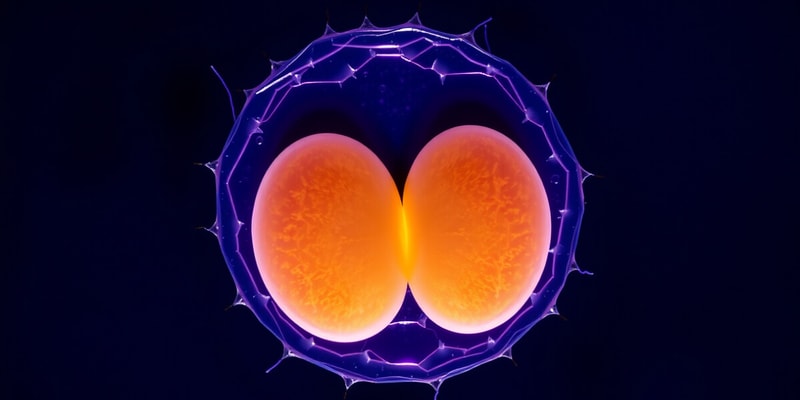Questions and Answers
What occurs at the onset of meiosis?
What is formed when homologous chromosomes pair?
Bivalents
Crossing over occurs in metaphase I.
False
What happens to the tetrads during early anaphase I?
Signup and view all the answers
In telophase II, there are now ______ cells, each with half the number of chromosomes of the parent cell.
Signup and view all the answers
What is the result of the first meiotic division?
Signup and view all the answers
Match the stages of meiosis with their descriptions:
Signup and view all the answers
Study Notes
Meiosis Overview
- Meiosis is the process of sex cell division that reduces chromosome number by half, resulting in four genetically distinct cells.
Stages of Meiosis
- Onset of Meiosis: DNA condenses into chromosomes; homologous chromosomes start to pair.
- Formation of Bivalents: Homologous chromosomes pair to form bivalents; centrioles move to opposite poles.
- Tetrad Formation: Bivalents duplicate into tetrads; nuclear membrane disintegrates, allowing for crossing over (recombination).
Meiosis I
- Metaphase I: Tetrads line up at the cell's midline, attached to spindle fibers at centromeres.
- Early Anaphase I: Tetrads separate; paired chromatids migrate to opposite poles via spindle fibers.
- Late Anaphase I: Chromatids near spindle poles; cell membrane starts to constrict.
- Telophase I: Nuclear membranes reform around separated chromatids; cell membrane fully constricts, leading to cell division.
Outcome of Meiosis I
- Each of the two resulting cells has the same number of chromatids as the original parent cell; this cell is now in a haploid state.
Meiosis II
- Prophase II: No further duplication of homologous chromatids; cells prepare for second division.
- Metaphase II: Chromatids align at the mid-cell again, with centrioles and a spindle apparatus present.
- Anaphase II: Separated chromatids move toward opposite poles; cell membrane begins constriction.
- Telophase II: Four cells are formed, each containing half the number of chromosomes compared to the original parent cell.
Studying That Suits You
Use AI to generate personalized quizzes and flashcards to suit your learning preferences.
Description
This quiz covers the stages of meiosis, detailing key events such as the formation of bivalents and tetrads, as well as the significance of crossing over. Test your knowledge on how sex cell division contributes to genetic diversity.




